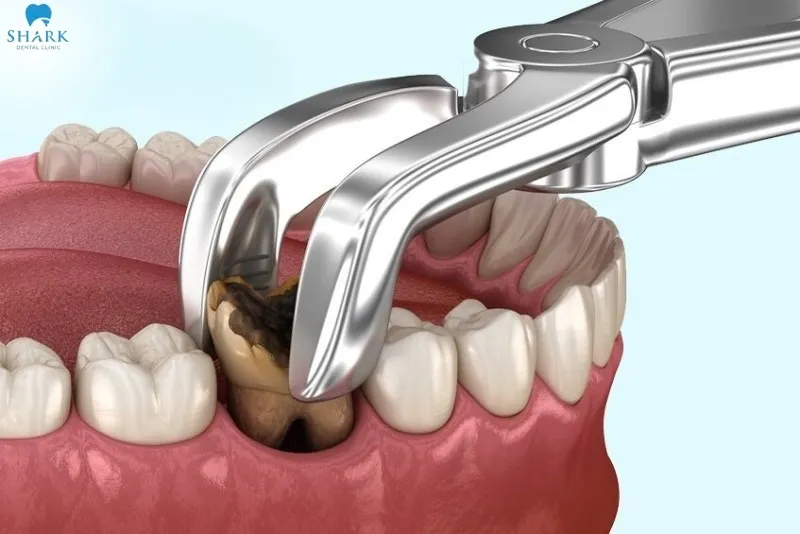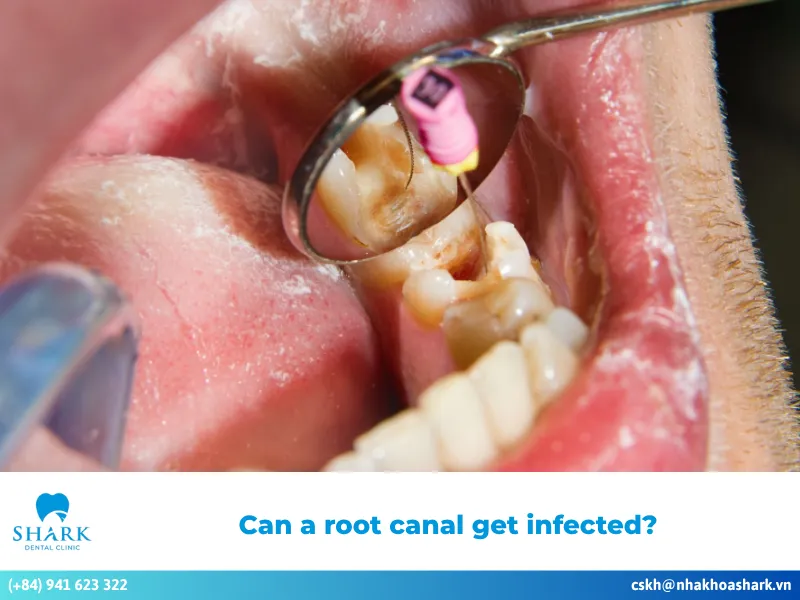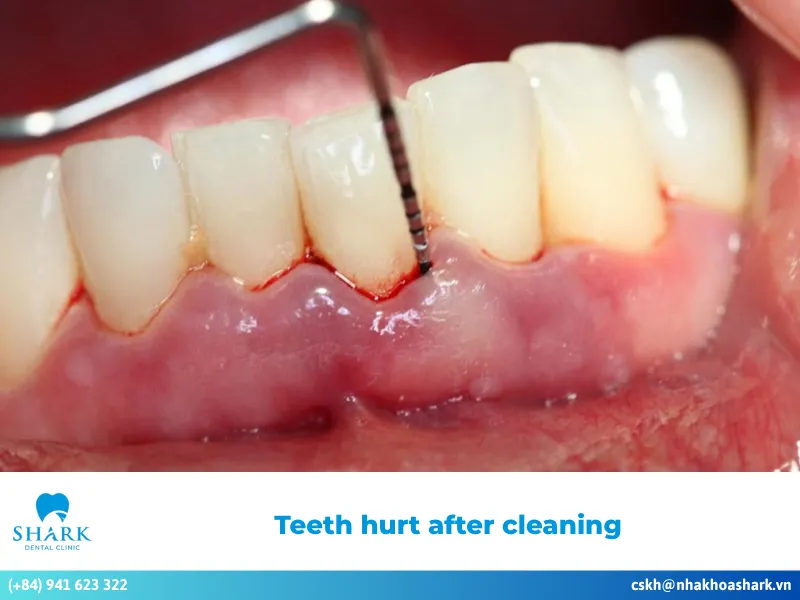Root canal treatment is a dental procedure designed to remove infected pulp caused by prolonged tooth decay. This procedure helps preserve the natural tooth and prevent serious complications. However, not every root canal treatment is completely successful. So, what are the failed root canal symptoms, and how should these issues be addressed? Let’s explore the details with Shark Dental Clinic to find the right solution!
What is a failed root canal?
A failed root canal occurs when a tooth remains infected after treatment or shows other signs, such as gum inflammation or abscess formation. This failure can happen immediately after the procedure or develop gradually over time. This failure can happen immediately after the procedure or develop gradually over time. The primary cause is often incomplete removal of bacteria during the initial treatment, which allows the infection to return. Common signs of a failed root canal include tooth discoloration, swollen gums, a bump on gum after root canal procedure, and recurring pain.
If you notice any unusual symptoms in a tooth that has already undergone a root canal, it is important to see a dentist promptly for evaluation and treatment. Delaying care can allow bacteria to spread to surrounding teeth, making it more difficult to preserve your natural tooth.

Why do root canals fail?
Several key factors can lead to the failure of root canal treatment, including:
- File breakage inside the root canal.
- Difficulty cleaning curved root canals.
- Overfilling beyond the root tip.
- Perforation of the pulp chamber floor or root wall.
- Incorrect diagnosis or poor technique by the dentist.
- Incomplete filling of the root canal to its full length.
- Failure to completely treat accompanying oral diseases.
- Treatment performed at low-quality or non-reputable dental clinics.
Failed root canal symptoms
When a root canal is performed by an inexperienced dentist or at a non-reputable clinic, complications can arise, worsening the condition. Typical symptoms of a failed root canal include:
Persistent, dull pain that does not subside
After a properly performed root canal, pain should ease and eventually disappear. If the tooth continues to ache or feel sore over time, it indicates that bacteria in the pulp chamber were not completely removed, leading to ongoing inflammation and discomfort.
Pain reappearing long after treatment
Sometimes pain may seem to have disappeared after treatment but can return months or even years later, often accompanied by tooth mobility or gum abscess after root canal. This is a significant sign of a failed root canal, occurring when an inflamed area remains sealed within the canal. Over time, the infection may spread toward the root tip, damaging the surrounding bone and causing substantial pain after root canal.

Signs on X-ray Imaging
Failed root canal symptoms can often be clearly identified through X-ray images, which may reveal an enlarged area of infection in the jawbone. This persistent inflammation may be caused by remaining bacteria or incomplete sealing of the filling material. Common symptoms include tooth mobility and pus-filled fistulas on the gums.
Loose tooth and pus-filled fistulas on the gums
When an infection extends to the root apex area, it can gradually destroy the bone and surrounding supporting structures, leading to a loose tooth. Additionally, gum fistulas may develop, discharging white or reddish fluid, often accompanied by bad breath or an unpleasant odor. Even in the absence of pain, these are clear signs of a failed root canal, and you should visit a dental clinic immediately for examination and treatment.
>>> See more: Are root canals bad for you?
What is the failure rate of root canals?
The failure rate of root canal treatment depends on several factors, including the complexity of the tooth structure, the dentist’s skill and experience, the quality of the canal filling, and how well the patient maintains oral care after treatment.
Generally, the failure rate of root canal treatments is low, with success rates ranging from 86% to 98%. This means the failure rate is approximately 2% to 14%. Therefore, patients should remain confident and practice proper post-treatment care to minimize risks and ensure long-term treatment success.

What to do for a failed root canal?
If any symptoms of a failed root canal appear, it is essential to visit your dentist promptly for professional evaluation and timely intervention. Common treatment options include:
Root canal retreatment
This is the most common option considered when a root canal fails. If the failure is due to old filling materials or incomplete cleaning of the canals, the dentist will remove the previous filling, thoroughly disinfect the canal, and then refill it. This procedure requires high technical precision and experience, but when performed correctly, it can restore the tooth’s normal function.
Apicoectomy (Root-end surgery)
If retreatment is not effective, an apicoectomy may be a suitable alternative. During this procedure, the dentist removes the infected tissue around the root tip and seals the root end. This surgical method should be performed by a skilled and experienced specialist, especially when the infection has spread beyond the canal, effectively removing hard-to-reach infected areas.
Tooth extraction
In cases where the root structure is severely damaged or cannot be restored, extraction may be necessary. The dentist will then recommend appropriate tooth replacement options, such as dental implants or bridges, to prevent the infection from spreading and to protect overall oral health.
>>> See more: Can a dentist remove a root canal tooth?

Through this overview, Shark Dental Clinic has provided a detailed explanation of failed root canal symptoms, their causes, and how to manage them effectively. Recognizing symptoms early allows for timely action, preventing infection from spreading and affecting other teeth. If you notice any unusual signs after a root canal procedure, visit a reputable dental clinic as soon as possible for examination and treatment. Early intervention helps preserve your natural teeth and ensures long-term oral health and comfort.









